There is a new addition at The Opéra Bastille for its 30th birthday. The two catwalks in the auditorium, which are loaded with 2 kW profiles to ensure key lighting at that distance, have made some space for three LED moving heads to facilitate alternating productions. At 42 m from the stage, power was essential.
Rui De Matos, Head of Lighting at The Bastille, and Nicolas Da Canal, Head of Maintenance, after a thorough and comparative evaluation chose the High End SolaFrame 3000. Considering the requirements set by opera lighting designers, we can assume that the luminous flux of this fixture is not its only quality.
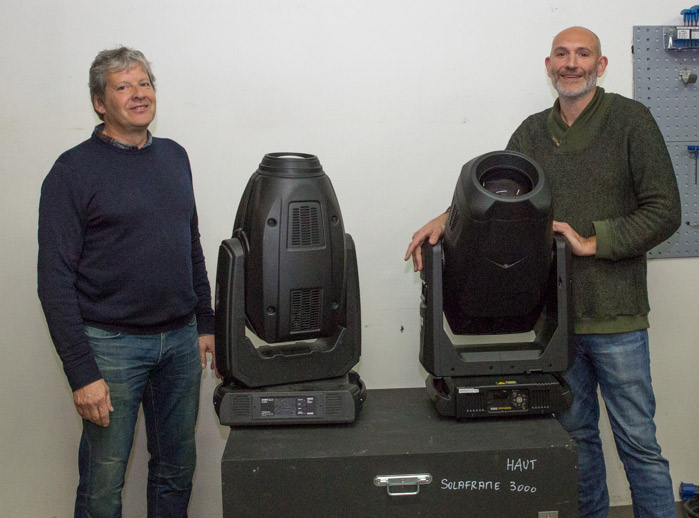
The request for tender stated:“Supply of automated fixtures to be installed in the technical catwalks of the Bastille Opera House, the purpose of which is to provide long-range motorized sources to facilitate change-overs between different productions.”
We asked Rui De Matos and Nicolas Da Canal to give us the details of this investment.
SLU : What was your priority? Power?
Rui De Matos : Nico and I chose this projector together and, at the time of the RFT, we didn’t automatically specify an LED fixture because we needed a very high luminous flux to reach the stage from the auditorium catwalks, a distance of 40 m. At the beginning of the project, we had in mind a discharge lamp. Following Prolight+Sound, and as soon as we had the opportunity to have a demo unit to test it and compare it to other motorized units – both LED and discharge – we were pleasantly surprised.
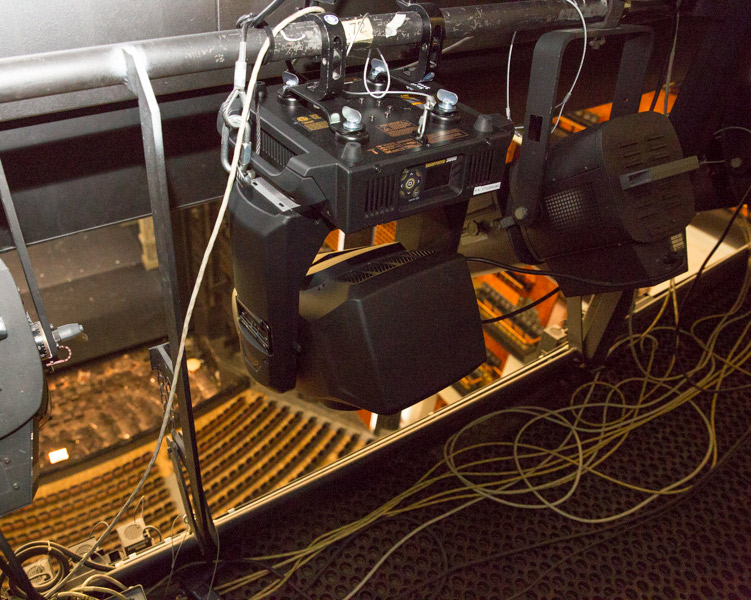
Nicolas Da Canal : Also, we intend to replace our discharge sources, so we were interested in this possibility – which we hadn’t imagined – to be able to use an LED fixture.
SLU : Why do you feel the need to do away with lamps?
Nicolas Da Canal : Because manufacturers are no longer able to manufacture discharge lamps within acceptable color temperature tolerances. Given the volume of production, the manufacturing process has become very approximate.
Rui De Matos : And, even if environmentalism is not necessarily our top priority, we must keep in mind that a discharge lamp usually remains on during the whole show, even if we will only use the fixture for two or three effects per act. This is not the case with LEDs. That also has a significant impact on the maintenance budget.
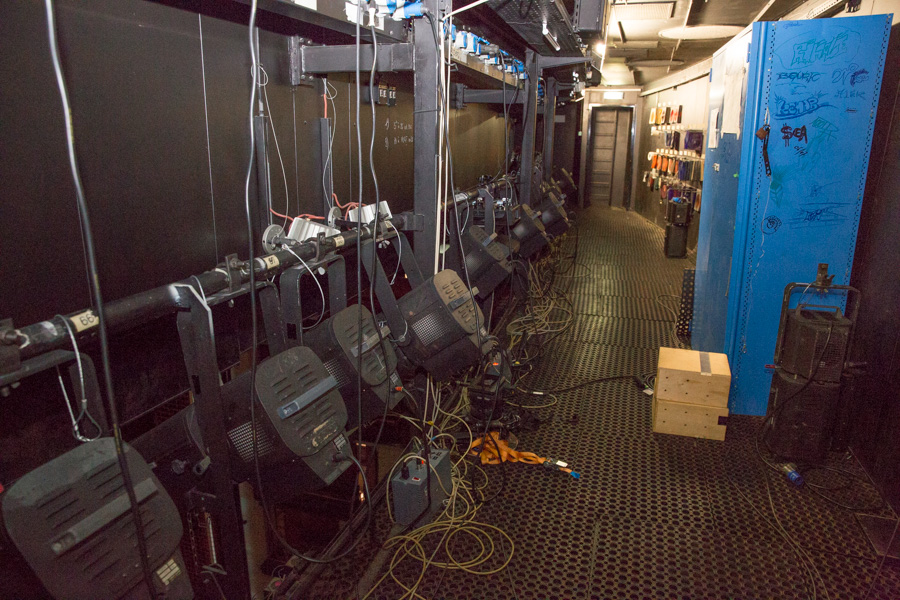
SLU : Rui, do the moving heads on the catwalk satisfy your requirements?
Rui De Matos : Yes, it had become a necessity. When we have three operas in rotation and some of the lighting designers require more than half of the fixtures on the catwalk for their production, despite the large number of fixed lights, we can’t satisfy them all.
They are forced to share sources because there is no possibility to modify their positions between two performances. By installing three motorized fixtures on each catwalk, we solve the problem of change-overs, with more possibilities for adjustment.
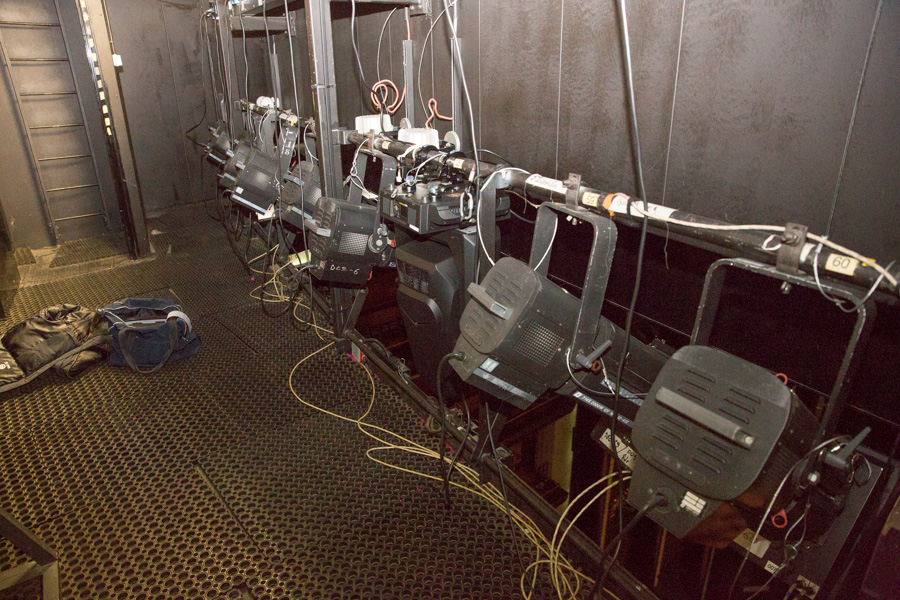
SLU : How many have you installed?
Rui De Matos : We have invested in a total of seven SolaFrame 3000s: three on catwalk 1, three on catwalk 2 over the auditorium, and one spare.
SLU : Nicolas, did you do any illuminance measurements on stage?
Nicolas Da Canal : Yes, at 42 m, with a tight beam of 7°, we obtain 820 lux at the centre and 767 lux at the edge, so it is really smooth and uniform, without any hot spot.
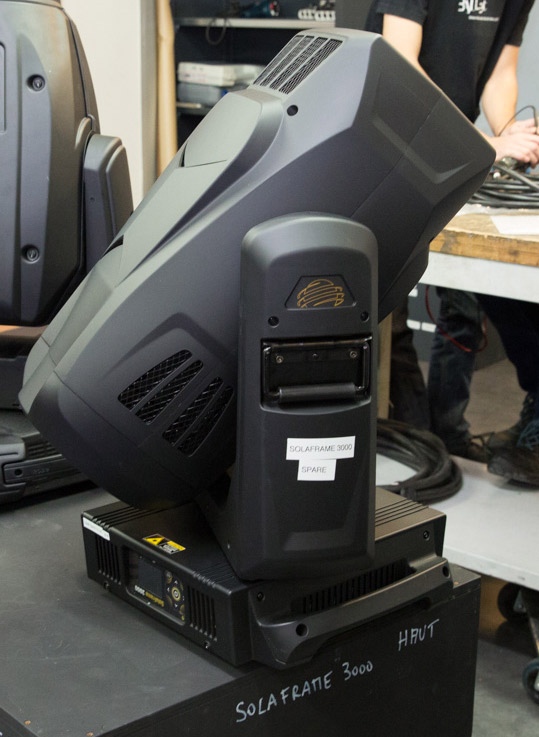
SLU : Besides the high luminous flux, what were your requirements?
Rui De Matos : We have high standards in terms of quiet operation. This is crucial. It is absolutely essential to reduce noise because the more automated units used, the more resonances there, are and it can produce a deafening noise. The Sola 3000 is very quiet.
Nicolas Da Canal : Another parameter that is very important in theatre, especially at long range, is the frost, and the possibility to apply it at any zoom angle. The SolaFrame 3000 does indeed have this particular characteristic. I just wish it could be zoomed in a little more, just two degrees narrower would do.
Rui De Matos : The Sola 3000 has a really good frost. We use a lot of frost in the scenes and the frost is quite satisfactory. I don’t try to blur the beam by de-focusing, I prefer to focus sharply and then engage a frost so that the look is cleaner. There are two gobo wheels, which is always interesting, even if there are only two or three gobos that suit us on each one, such as the foliage that we use most often.
SLU : Let’s talk about the colors. How does the color mixing suit you?
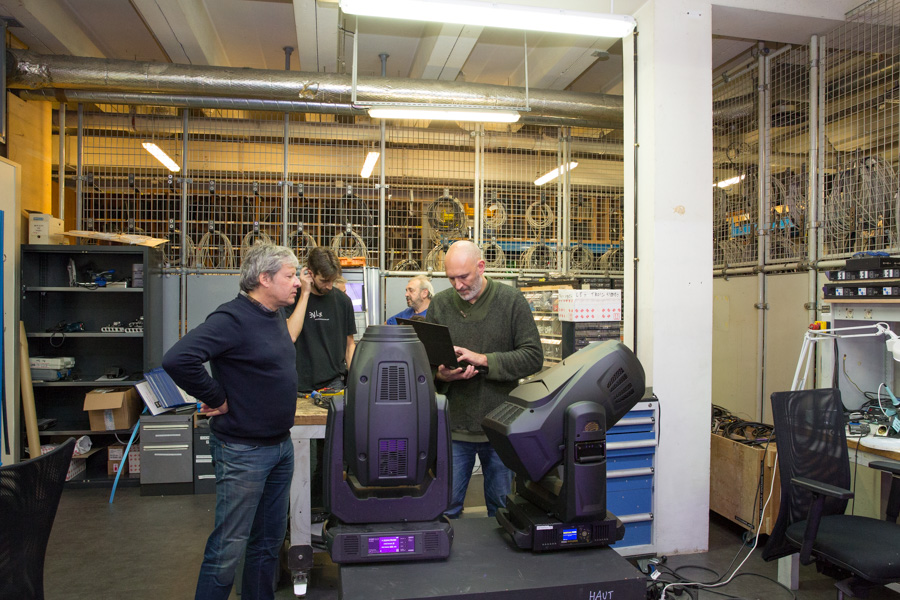
Nicolas Da Canal : Originally, we were not particularly going for subtractive color mixing, but at this level of luminous output, it still represents the majority of the products on the market. In my opinion, it’s not the best solution, but we can work with it.
At this working distance and for frontals, we only try to make slight corrections and we hardly use the CMY mixing, which doesn’t enable us to obtain the same tints as gels.
We had the same problem with the discharge lamps, except that the CRI was higher. In this case it is 70, but a filter raises the TM 30 value to 85. However, we have to admit that the magenta-cyan blend makes it possible to obtain quite interesting and useful hues.
Rui De Matos : The colors most often used are mainly correctors that look like a Lee 201, 200, deep blues and nice ambers for warm colors. It’s also very important to have a deep red and a progressive CTO and CTB. We don’t need perfection, but we do need well calibrated fixtures, all of which react in the same way to obtain the same hue everywhere with perfect uniformity.
Portrait de Rui De Matos
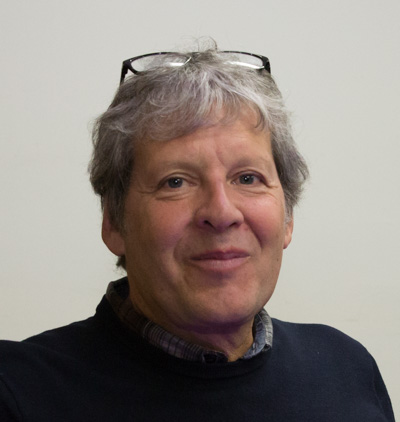
This is the first time we’ve meet Rui De Matos, appointed to this position a year ago, after the retirement of Didier Paillet. For all those who, like us, don’t know him, Rui is an authentic opera lighting designer.
Having arrived in the early days of The Bastille in 1989, he was part of the small lighting team – no more than six people – who cleared the path and carried out the installation for the opening season.
Rui De Matos : “It was quite an adventure, because you don’t open a theatre of this size every day.” I started as a console operator when the Opéra Bastille opened, then I became responsible for lighting production. It is a different role from that of department chief, but it is also a team management role.
My objective was simply to be a lighting designer and that’s what I did for 22 years… now I keep doing lighting but in a different way, or I advise lighting designers on new productions. I also did lighting projects externally where I did productions for Bastille, Elixir d’Amour at Le Marinsky, La Bayadère in Boston, Les Contes d’Hoffmann at La Scala, Don Carlos at Palau des Arts in Valencia…
SLU : What changes will you make to the lighting department?
Rui De Matos : I would like to change the lighting consoles for next year as a priority. I’d also like to continue upgrading the equipment to LED sources and replace our moving heads. We also need to find an LED source that can replace our old 4 kW HMI fixtures, which we have been using for nearly 20 years, and for which we are having more and more difficulty finding spare parts.
More information on the High End Systems Website.







